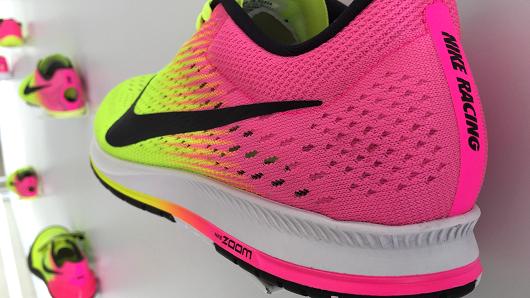Millennials move over. Generation Z outnumbers you by around a million, making the group the largest cohort of American consumers — a valuable demographic for brands to capture early.
Unfortunately for brands targeting the group, spending is down 2.4 percent compared to this time last year, as parents are contributing 63 percent of teen spend this year, down from an average 68 percent. Those figures come from a bi-annual survey conducted by research firm Piper Jaffray.
According to the survey, 5,500 teens with an average age of 16 from across the country shared information on their preferences and spending related to fashion, food, media and more.
FOOD > FASHION
Teens are spending slightly more on food outside the home than a year ago, with almost a quarter of spending now going to grub — which trumped the amount spent on clothing by 5 percentage points.
But Gen Z isn’t crazy about full-service restaurants. In fact, teens prefer limited service establishments two times to one, Piper Jaffray found, marking the highest preference for limited service since at least 2009.
Chick-fil-A took the top spot as the most preferred restaurant, while Starbucks fell to second. The coffee chain has been number one 12 times out of the last 14 surveys. (Chipotle snagged the lead those two other times, and now ranks third.)
Piper Jaffray analyst Nicole Miller Regan noted the McDonald’s brand “remains generally strong” but cautions teens’ brand preference for the Golden Arches’ “remains below peak levels seen in prior survey periods, and also saw strong moves from Five Guys and Red Robin.”
WHAT’S HOT AND WHAT’S NOT
There’s no sign of waning preference for athleisure, with athletic wear predominating among teens, according to the survey. Some 41 percent of teens name an athletic apparel brand as their preferred apparel brand, 15 percentage points higher than last year and 6 percentage points higher than in the fall.
Nike remains the top apparel and footwear brand, up sharply from last year for both males and females by a very wide margin.
Adidas is the fastest growing brand in the survey, Piper Jaffray found, with the company’s apparel jumping to fifth favorite from tenth last year. Adidas footwear preference hits an all-time high for females and a decade high for males. The German athletic brand is also unseating Nike as the top “new brand” worn by males.
Lululemon is also on the rise with teens, landing as the fourth most desired apparel brand and sneaking into the top ten as a fashion trend for males for the first time. Privately-held Patagonia cracked the top five.
However, there’s trouble in teenland for Under Armour: It wasn’t named by enough teens to land in the top ten favorite apparel or footwear brands. Preference for Under Armour is flat for males, and not a single upper income female named it as favorite apparel brand.
In fact, when it comes naming a brands teens no longer wear, Under Armour jumped to number one for males from third in Piper Jaffray’s fall survey.
When it comes to what else teens say is trending in fashion, it’s mainly athletic-related. New additions to the guys’ trending list included ripped jeans, jeans, and the aforementioned Lululemon. Meanwhile, Ralph Lauren and Vineyard Vines were among the names that fell off their trend list.
For females, non-athletic preferences included chokers, which moved into second place from tenth; while bralettes and Birkenstock have fallen off the top ten list from the fall. Crop tops and Michael Kors also lost ground since last spring.
Michael Kors still holds the top spot for handbags, but its losing share. Coach, Kate Spade and Vera Bradley remain in second, third and fourth respectively. Target handbags appeared in the top ten for upper-income females, and move up a spot for average income females.
MALLRATS NO MORE

Historically, older Americans adopted online shopping a bit quicker than teens, a group that seemingly enjoyed the social aspect of hitting the stores more, but that’s been changing. Online-only brands or retailers hit a survey peak for shopping channel preference at 17 percent, with pure-play ecommerce showing big growth as compared to last spring’s survey.
Amazon and Nike have held the number one and two spots respectively as favorite websites for at least the last four surveys. Amazon cemented its top position with 43 percent market share, compared to 40 percent share in the fall, while Nike sits at number two with a distant 5 percent share, down from 8 percent in the fall.
Piper Jaffray estimated Amazon’s soft line dollars grew from $12.4 billion to $21.7 billion between 2014 and 2016, representing 56 percent of overall softline industry growth.
Amazon may very well hold teens attention because of their household’s Prime membership, particularly for those with higher-income. The survey suggests 69 million U.S. households have a Prime memberships, with 63 percent of new Prime members coming from the top two quintiles of household income.
TEENS SOCIAL MEDIA HABITS
It not entirely surprising that Snapchat continues to reign supreme as teen’s social platform of choice. The survey indicates 81 percent of this Gen Z group checks it at least once per month (likely much more often), topping Instagram at 79 percent. However, Snapchat’s popularity hasn’t necessarily come at Facebook’s expense, which held fairly steady over recent surveys.

